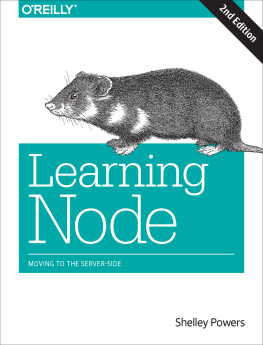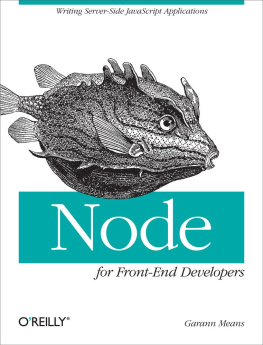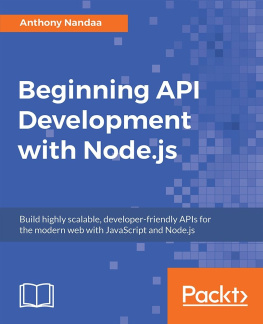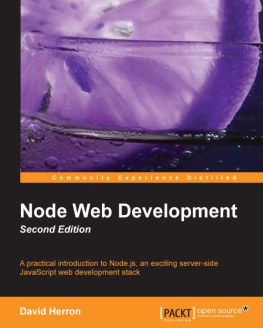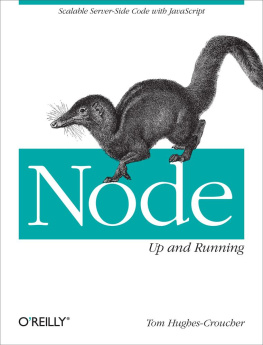Krishna Rungta - Learn NodeJS in 1 Day: Complete Node JS Guide with Examples
Here you can read online Krishna Rungta - Learn NodeJS in 1 Day: Complete Node JS Guide with Examples full text of the book (entire story) in english for free. Download pdf and epub, get meaning, cover and reviews about this ebook. year: 2016, publisher: Independently published, genre: Computer. Description of the work, (preface) as well as reviews are available. Best literature library LitArk.com created for fans of good reading and offers a wide selection of genres:
Romance novel
Science fiction
Adventure
Detective
Science
History
Home and family
Prose
Art
Politics
Computer
Non-fiction
Religion
Business
Children
Humor
Choose a favorite category and find really read worthwhile books. Enjoy immersion in the world of imagination, feel the emotions of the characters or learn something new for yourself, make an fascinating discovery.

- Book:Learn NodeJS in 1 Day: Complete Node JS Guide with Examples
- Author:
- Publisher:Independently published
- Genre:
- Year:2016
- Rating:3 / 5
- Favourites:Add to favourites
- Your mark:
Learn NodeJS in 1 Day: Complete Node JS Guide with Examples: summary, description and annotation
We offer to read an annotation, description, summary or preface (depends on what the author of the book "Learn NodeJS in 1 Day: Complete Node JS Guide with Examples" wrote himself). If you haven't found the necessary information about the book — write in the comments, we will try to find it.
Node.js supports both client and server side applications. It is based on JavaScript and is very fast in operation. These distinctive features made node.js as one of the most powerful framework in the Java Ecosystem. JavaScript alone allows you to build real-time and scalable mobile and web applications. With this e-book, you will explore more on the node.js framework and how to use it efficiently for web development.
Average developers or beginners who struggle to understand node.js basics will find this book very helpful and productive. The book tried to put examples that simplify problems usually faced by the users like how asynchronous code works, what are modules, how big file can be read, node.js express, etc. You will find that lots of concepts that take a long time to master can be learned in a day or two.
If this is your first interaction with node.js and dont want all sort of troubles that arise with the node, this edition is recommended. After going through this e-book, node.js will become an absolute pleasure.
Table of content
Chapter 1: Introduction
What is node.js
Why use Node.js
Features of Node.js
When to use and not use Node.js
Chapter 2: Download & Install Node.js
How to install node.js
Installing node through a package manager
Running your first Hello world application in Node.js
Chapter 3: Modules
What are modules in Node.js
Using modules in Node.js
Creating NPM modules
Extending modules
Publishing NPM Modules
Managing third party packages with npm
What is the package.json file
Chapter 4: Create Server and Get Data
Chapter 5: Node.js with Express
What is Express.js
Installing and using Express
What are Routes
Sample Web server using express.js
Chapter 6: Node.js with MongoDB
Node.js and NoSQL Databases
Using MongoDB and Node.js
How to build a node express app with MongoDB to store and serve content
Chapter 7: Promise, Generator, Event and Filestream
What are promises
Callbacks to promises
Generating promises with the BlueBird library
Creating a custom promise
Callbacks vs generators
Filestream in Node.js
Emitting Events
Chapter 8: Testing with Jasmine
Overview of Jasmine for testing Node.js applications
How to use Jasmine to test Node.js applications
Krishna Rungta: author's other books
Who wrote Learn NodeJS in 1 Day: Complete Node JS Guide with Examples? Find out the surname, the name of the author of the book and a list of all author's works by series.

